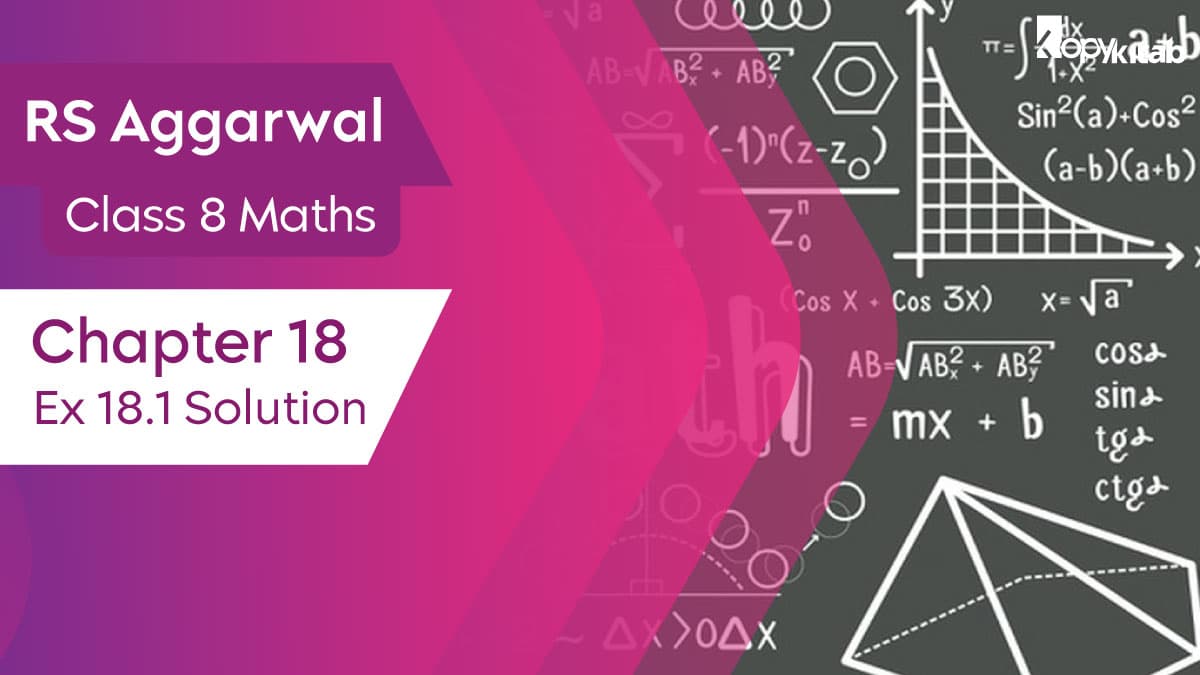
RS Aggarwal Class 8 Maths Chapter 18 Ex 18.1 Solutions: In this exercise, the students will study the basic application of formulas based on squares, rectangles, triangles, parallelograms, rhombuses. The solutions are designed by our Mathematics expert faculty team keeping in mind the latest CBSE syllabus to assist the students to score good marks in their exams. The students can easily download & solutions PDF which makes them prepare for their exams in a better way.
The students can refer to RS Aggarwal Class 8 Maths Chapter 18 Ex 18.1 Solutions & can download the PDF from the link provided below for better learning of the concepts. They are suggested to practice the exercise solutions on a regular basis that also builds up their confidence level. They can download these solutions PDF free of cost & get the detail of all concepts covered in this exercise. The solutions give the students a detailed & in-depth understanding of all the questions & concepts of this chapter.
Access RS Aggarwal Class 8 Maths Chapter 18 Solutions PDF
Download RS Aggarwal Class 8 Maths Chapter 18 Ex 18.1 Solutions
RS Aggarwal Class 8 Maths Chapter 18 Ex 18.1 Solutions
Important Definition for RS Aggarwal Class 8 Maths Chapter 18 Ex 18.1 Solutions
- Parallelogram
It is a quadrilateral in which the pairs of opposite sides are parallel. The lengths of the opposite sides are also equal. In a parallelogram ABCD, AB is parallel to CD & AD is parallel to BC. Also, AB = CD and AD = BC.
The angles are not right angles in a parallelogram. The sum of the angles is 360° & the opposite angles are equal. In order to find the area of a parallelogram, the students need to multiply its base with its height. Hence, the formula is Area of Parallelogram = b × h
- Rhombus
It is a quadrilateral in which the pairs of opposite sides are parallel. All sides are equal in length. The angles in a rhombus are congruent to each other. All diagonals are perpendicular bisector of the other. They cut each other in half & intersect each other at right angles. The area can be calculated as:
If the height & base are given, Area of Rhombus = b × h
When the length of the diagonals are given, Area of Rhombus = (d1 x d2)/2
where d1 is the diagonal & d2 is the length of the other diagonal.
The formula to find the perimeter is P = 4s where s is the length of the side.
- Rectangle
If measure the pair of sides we find that the parallel sides are equal in length too. A rectangle can be considered to be a parallelogram with equal angles as the angles in a rectangle are equal.
- Square
In a square, all sides share equal length. The diagonals in a square show the given below properties:
They bisect one another
The diagonals are of equal length
Each diagonal is perpendicular to one another
- Area of Triangle
It is a 3-sided polygon.
Area of triangle = ½ × Base × Height
A = ½ bh
Know more at the official website.
